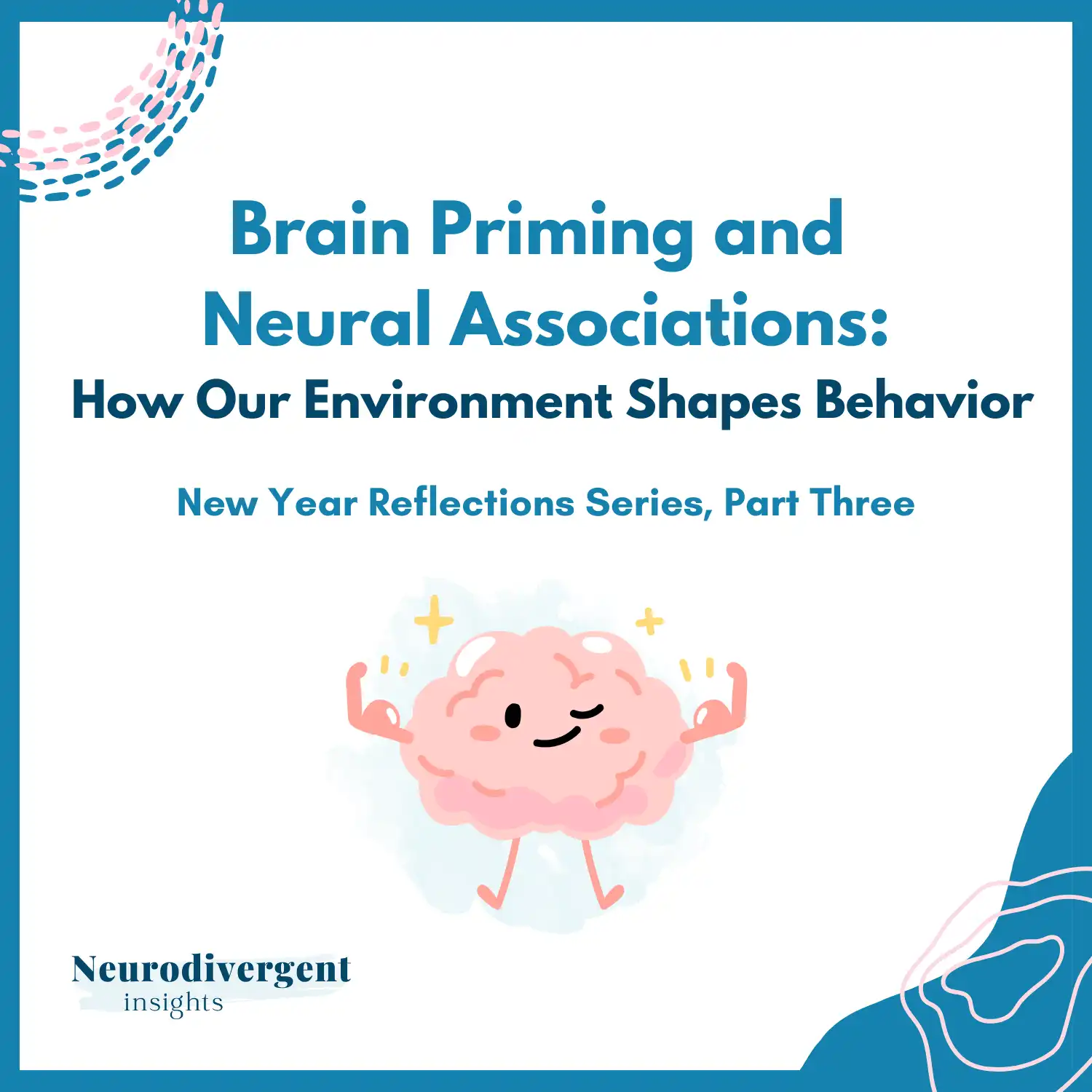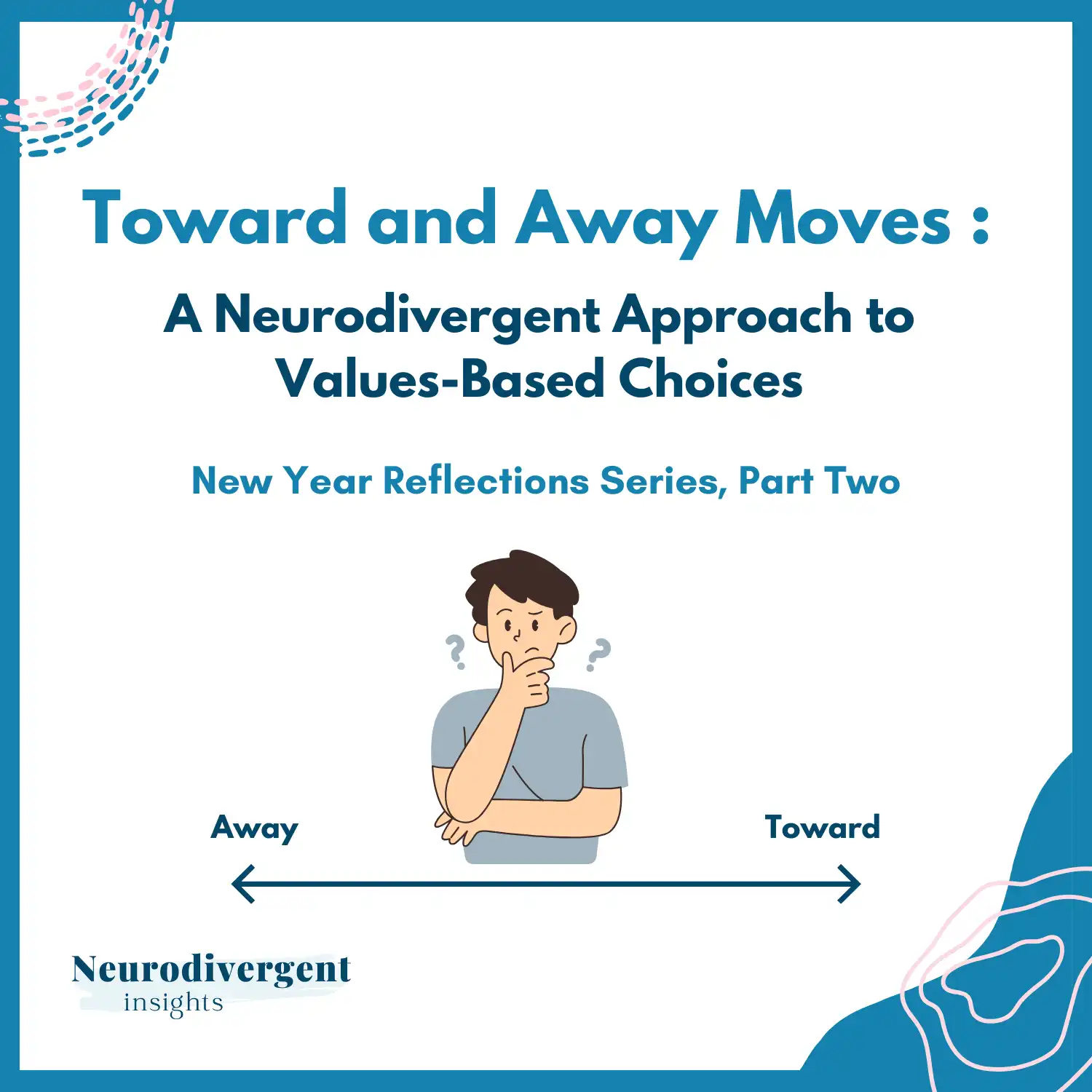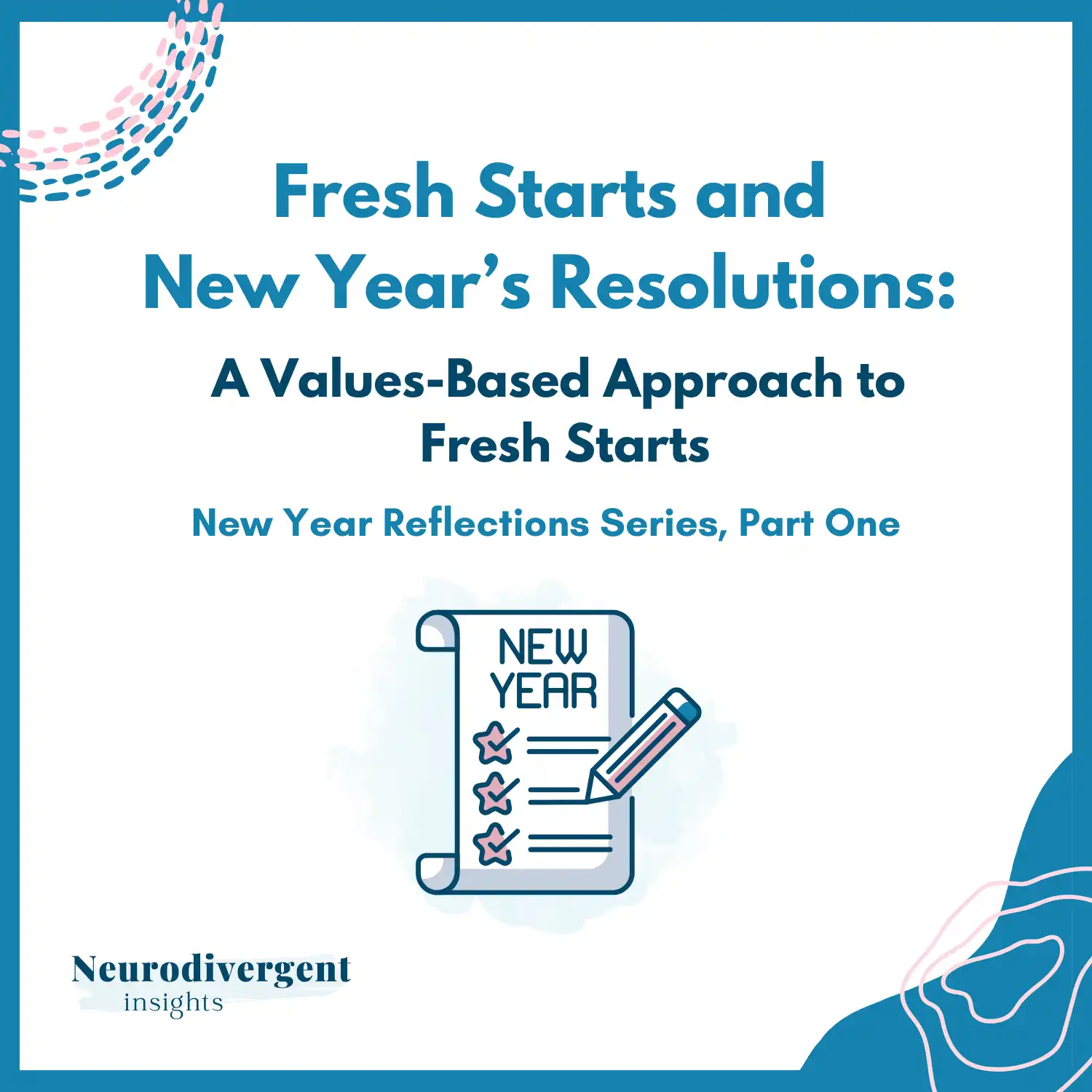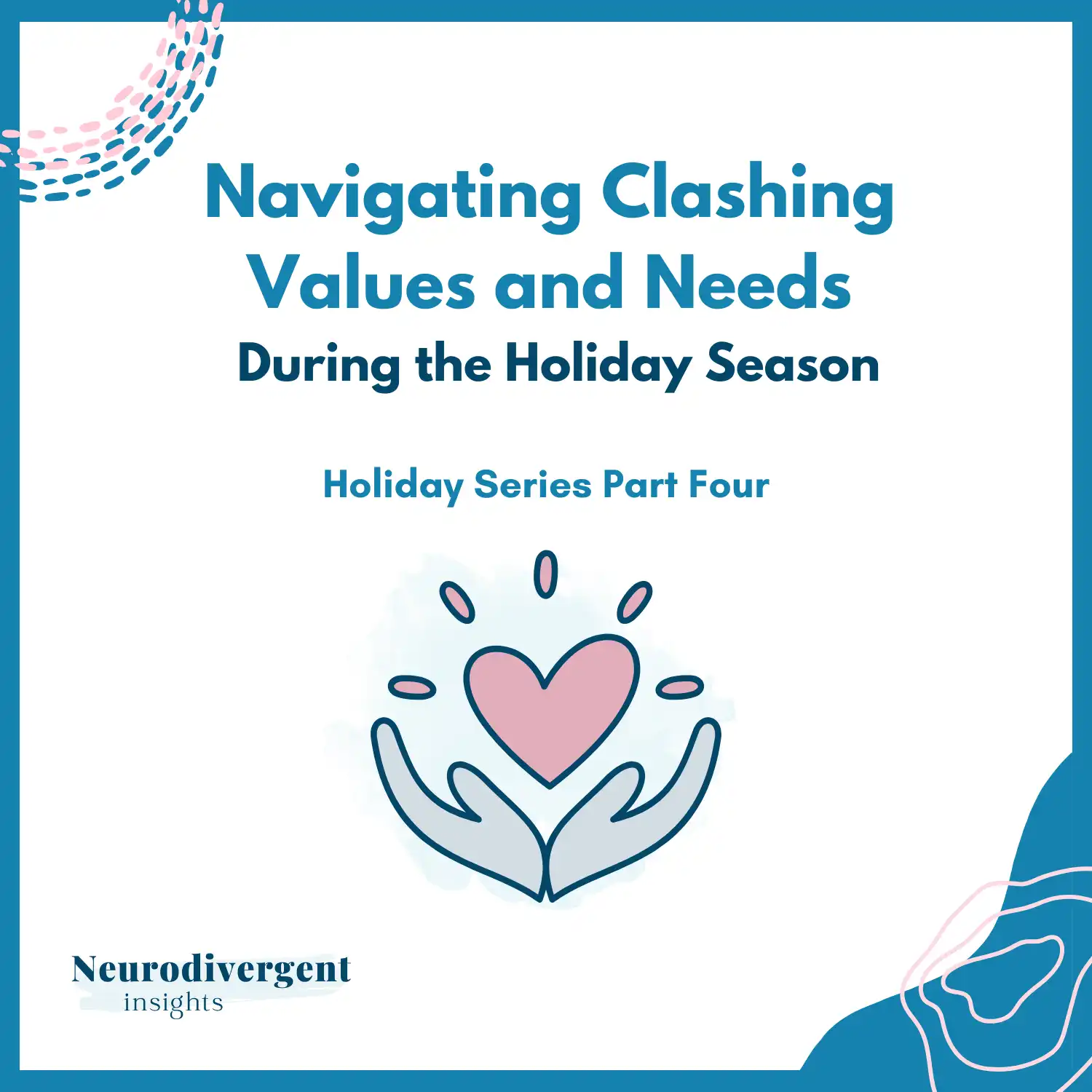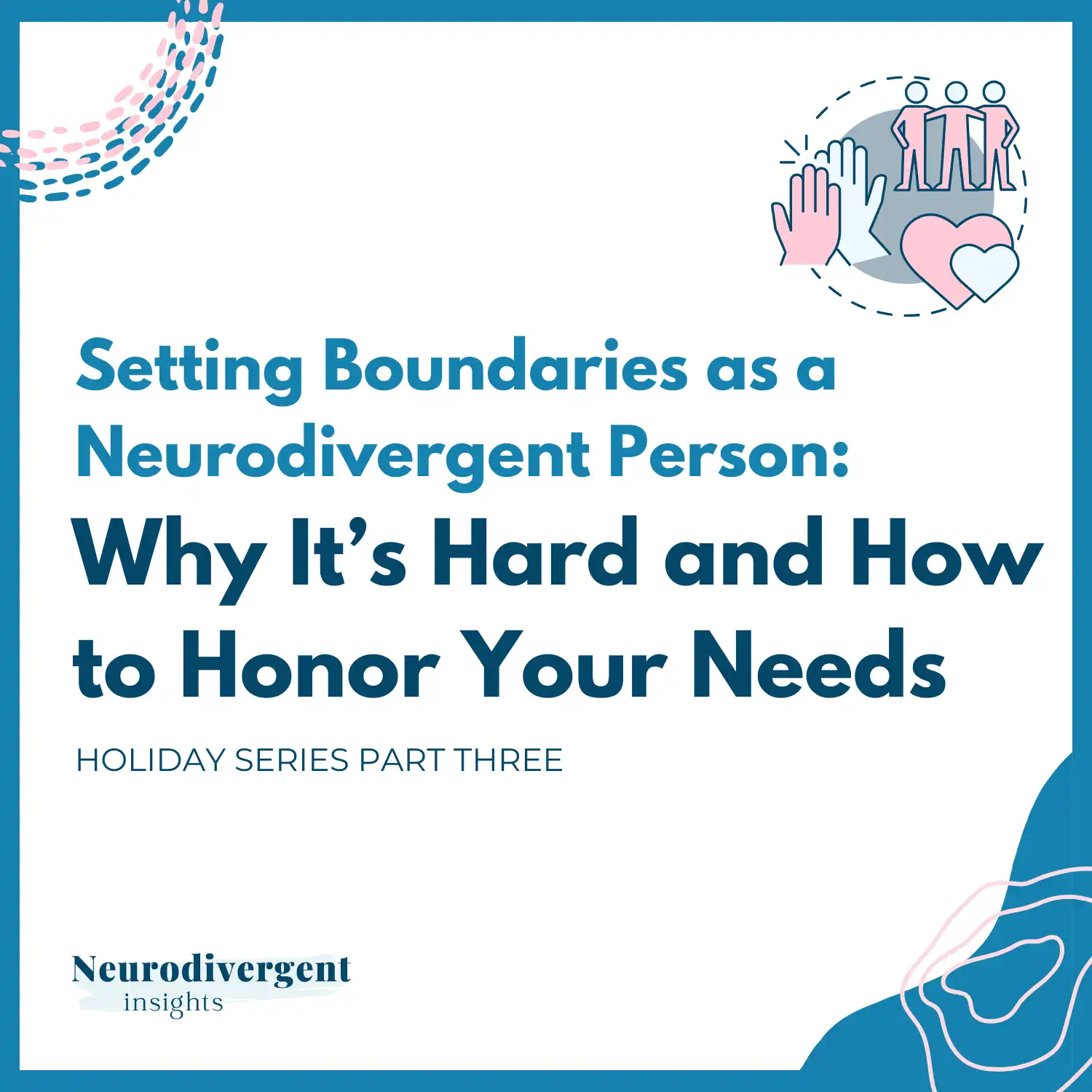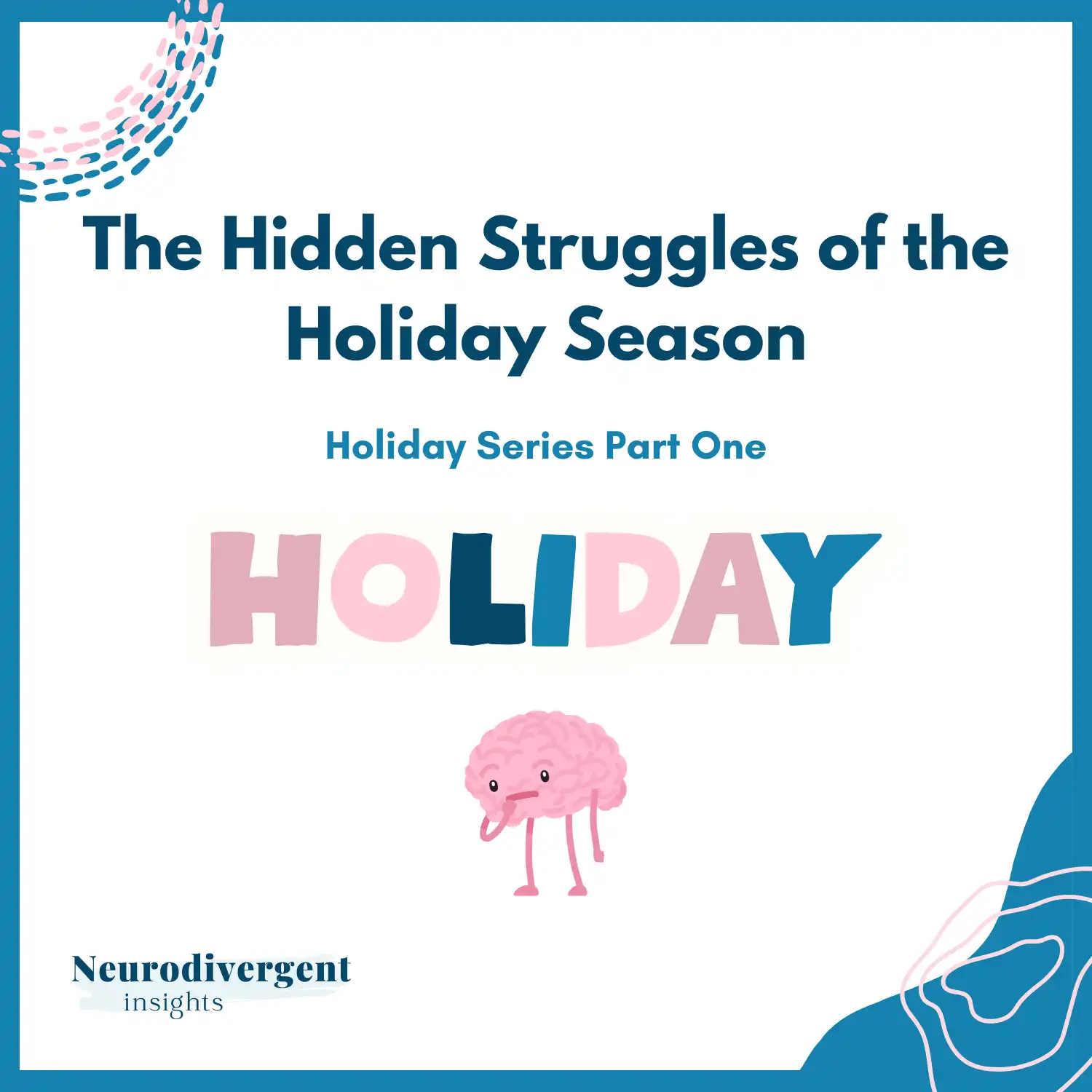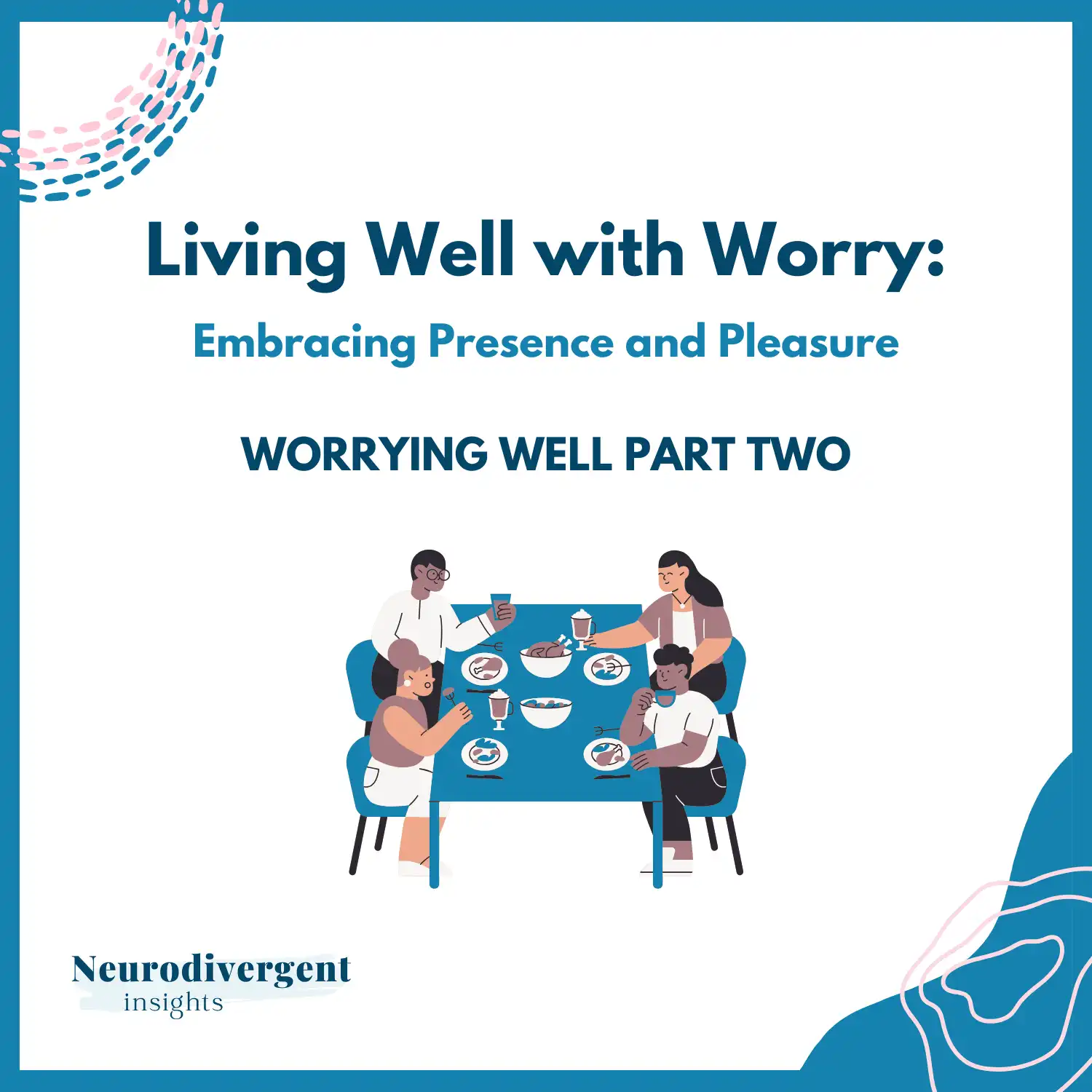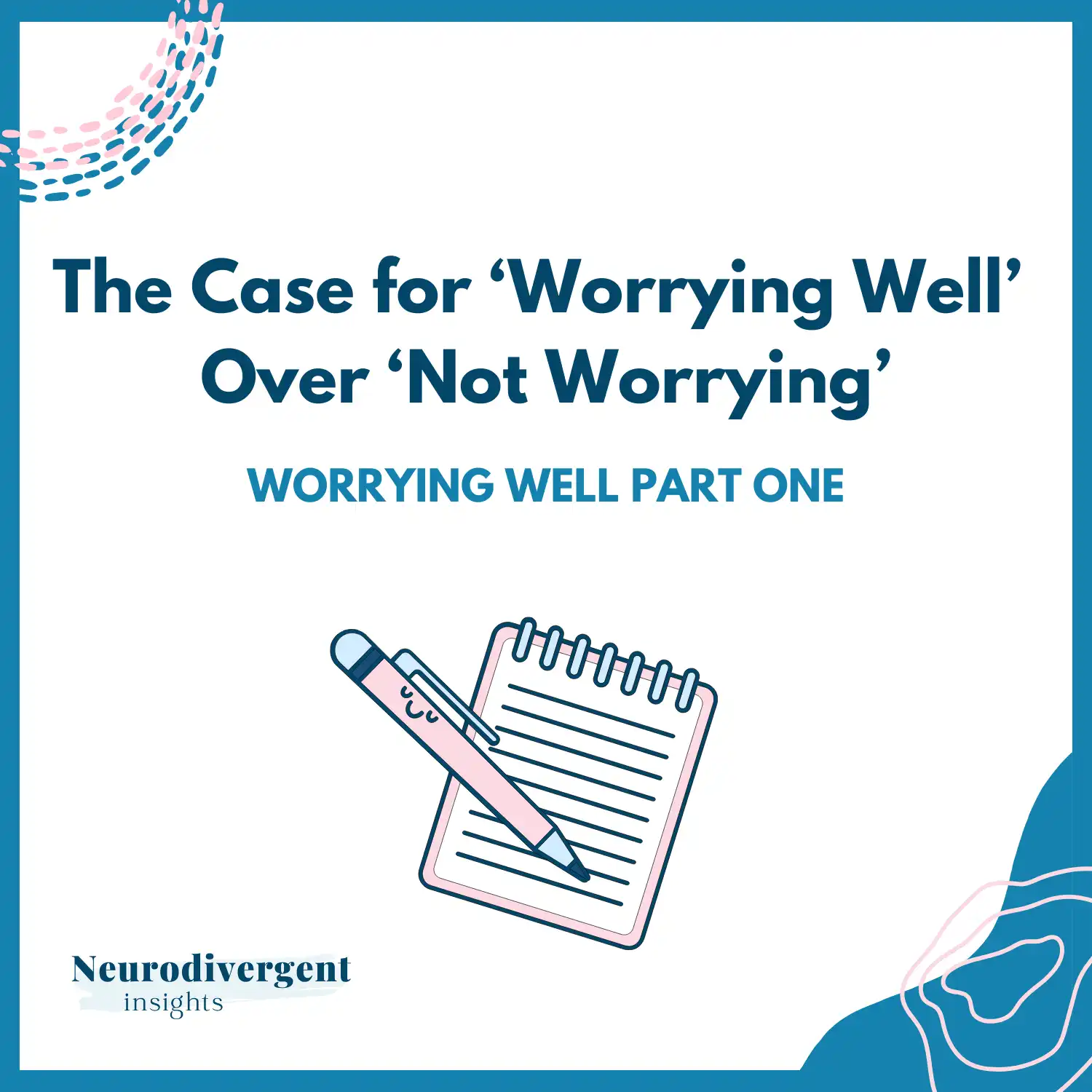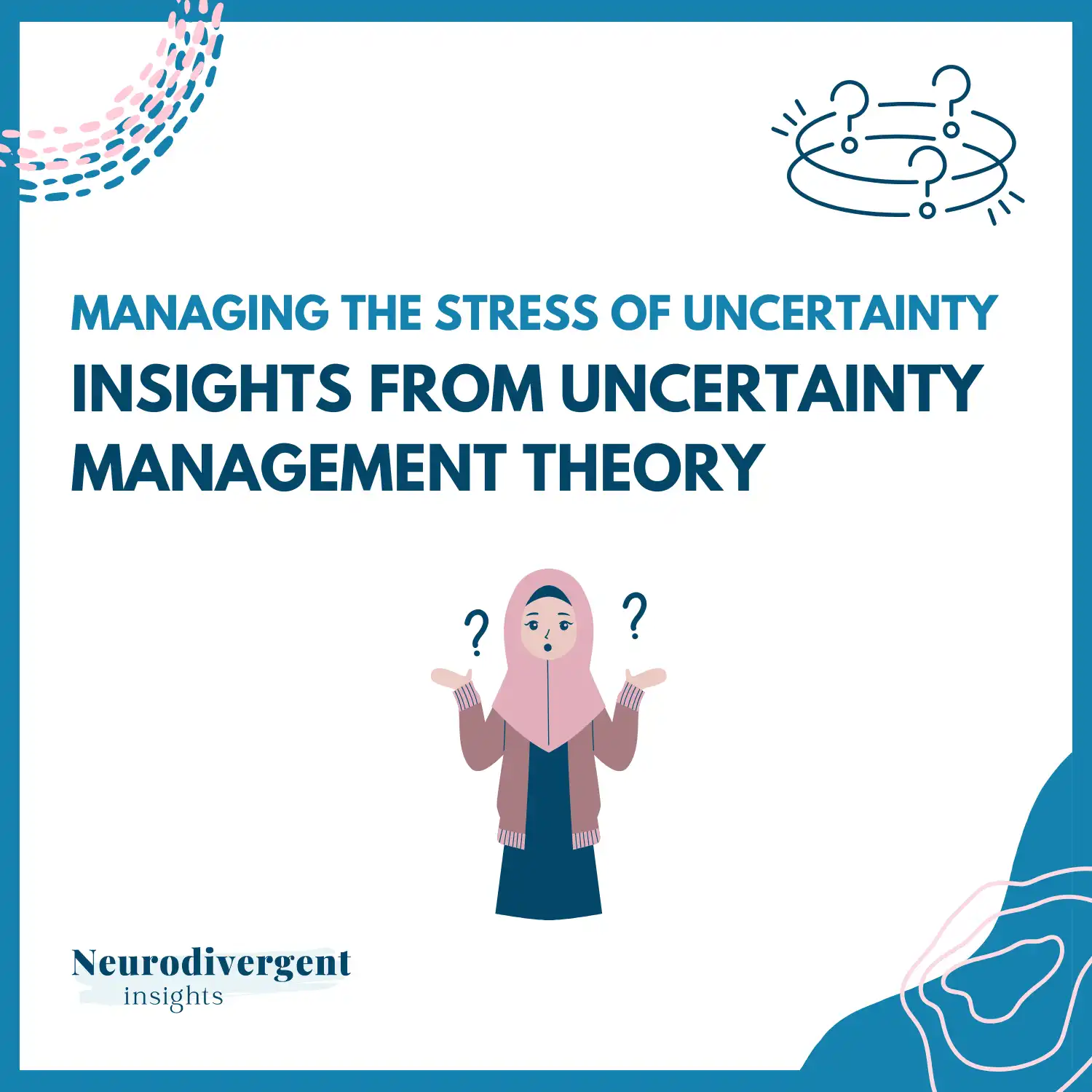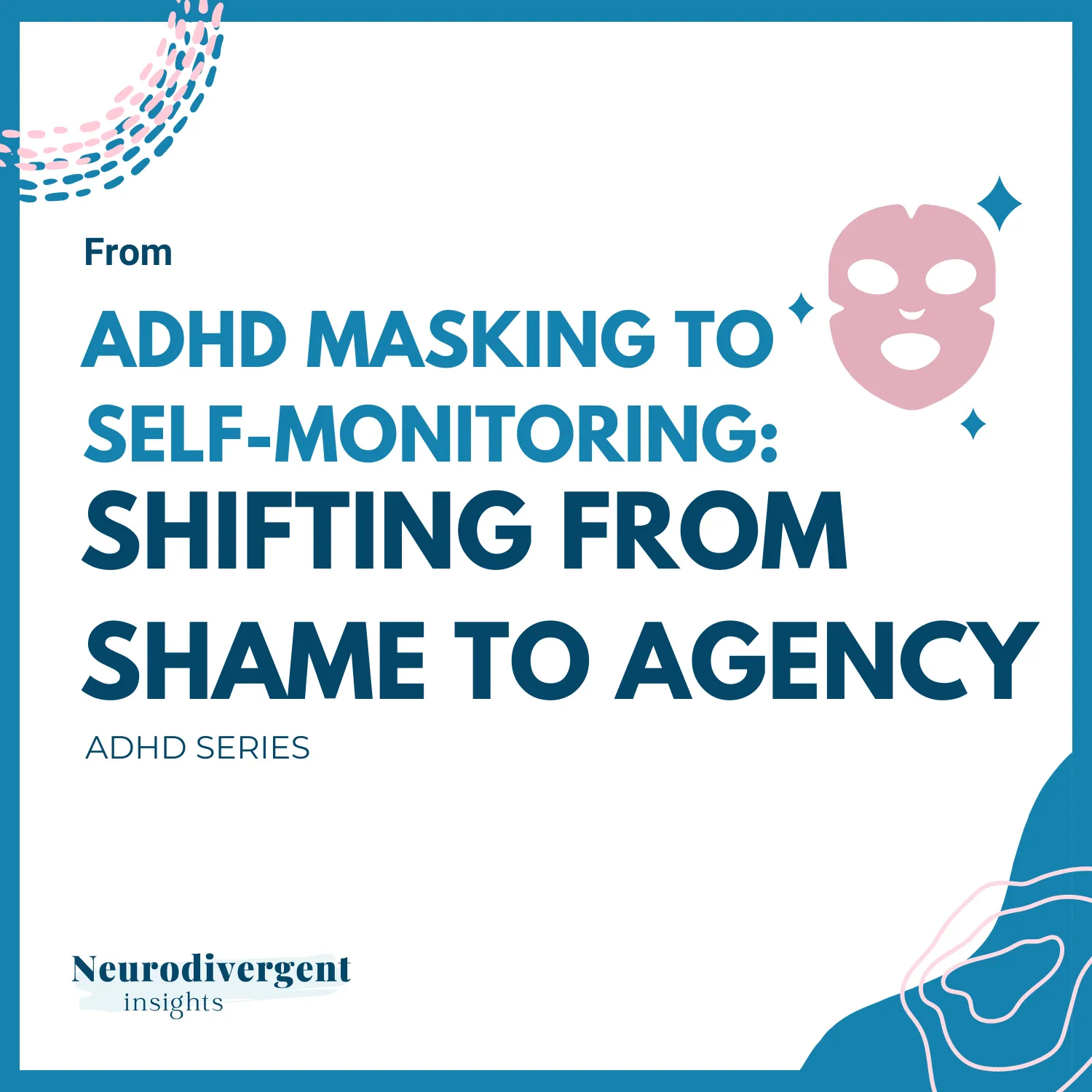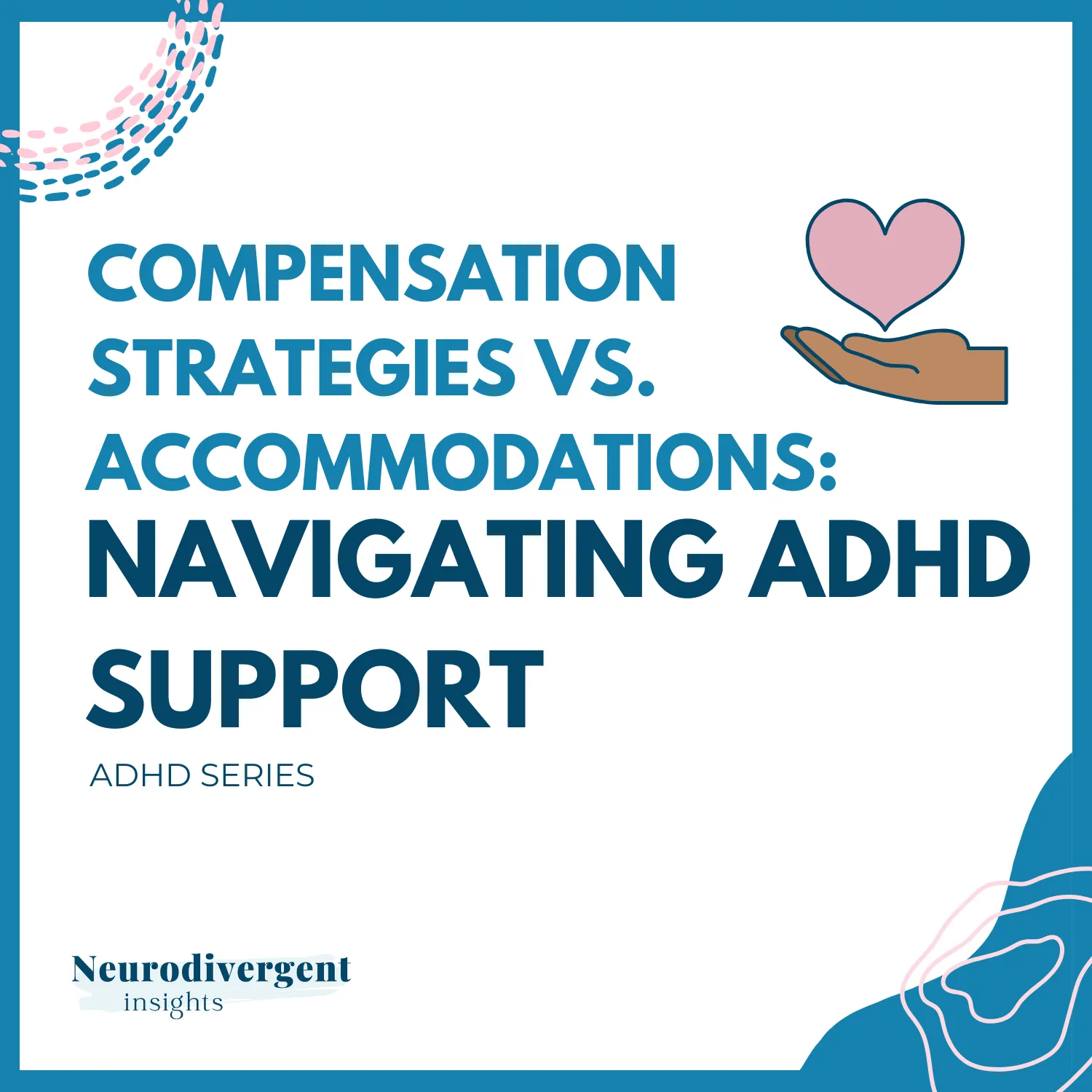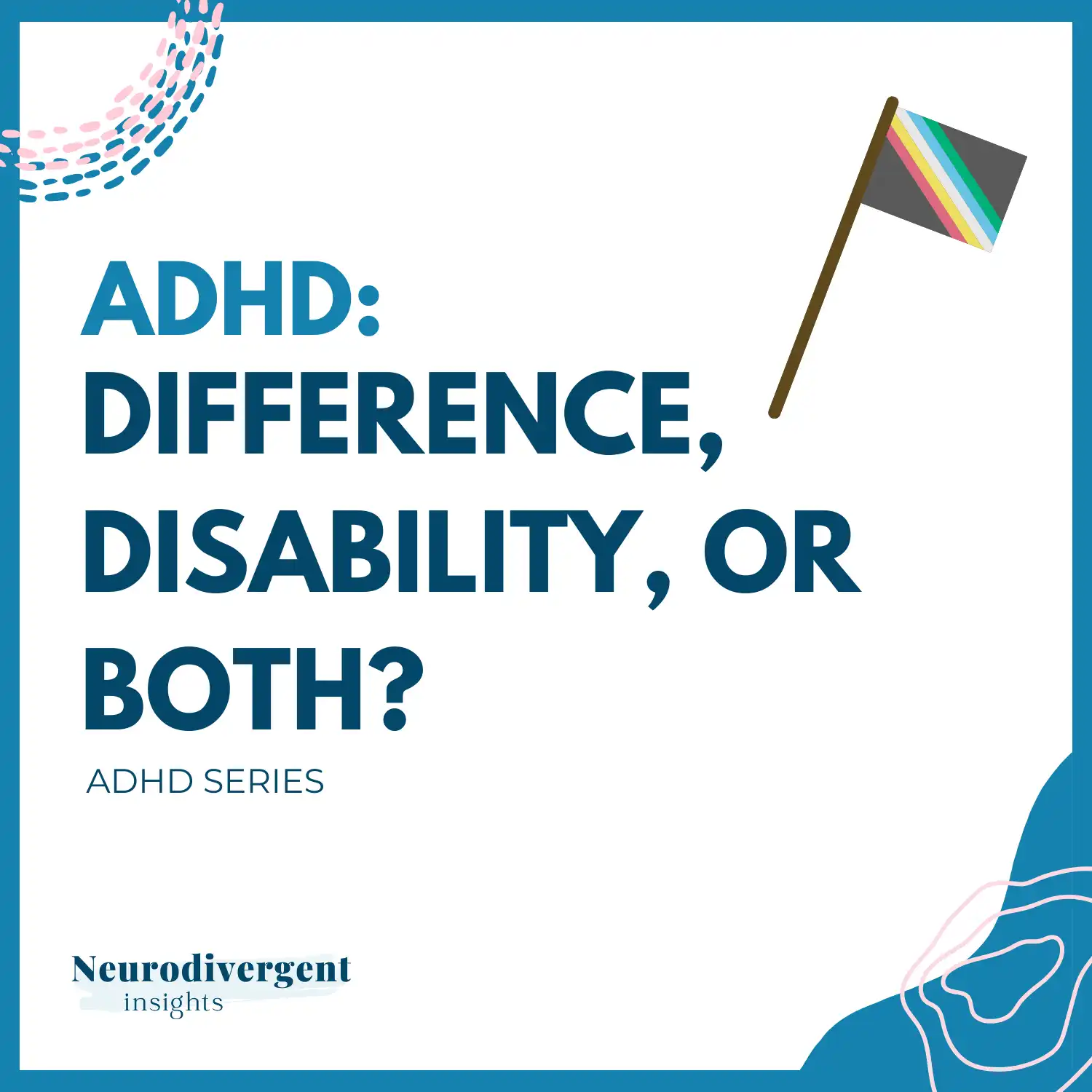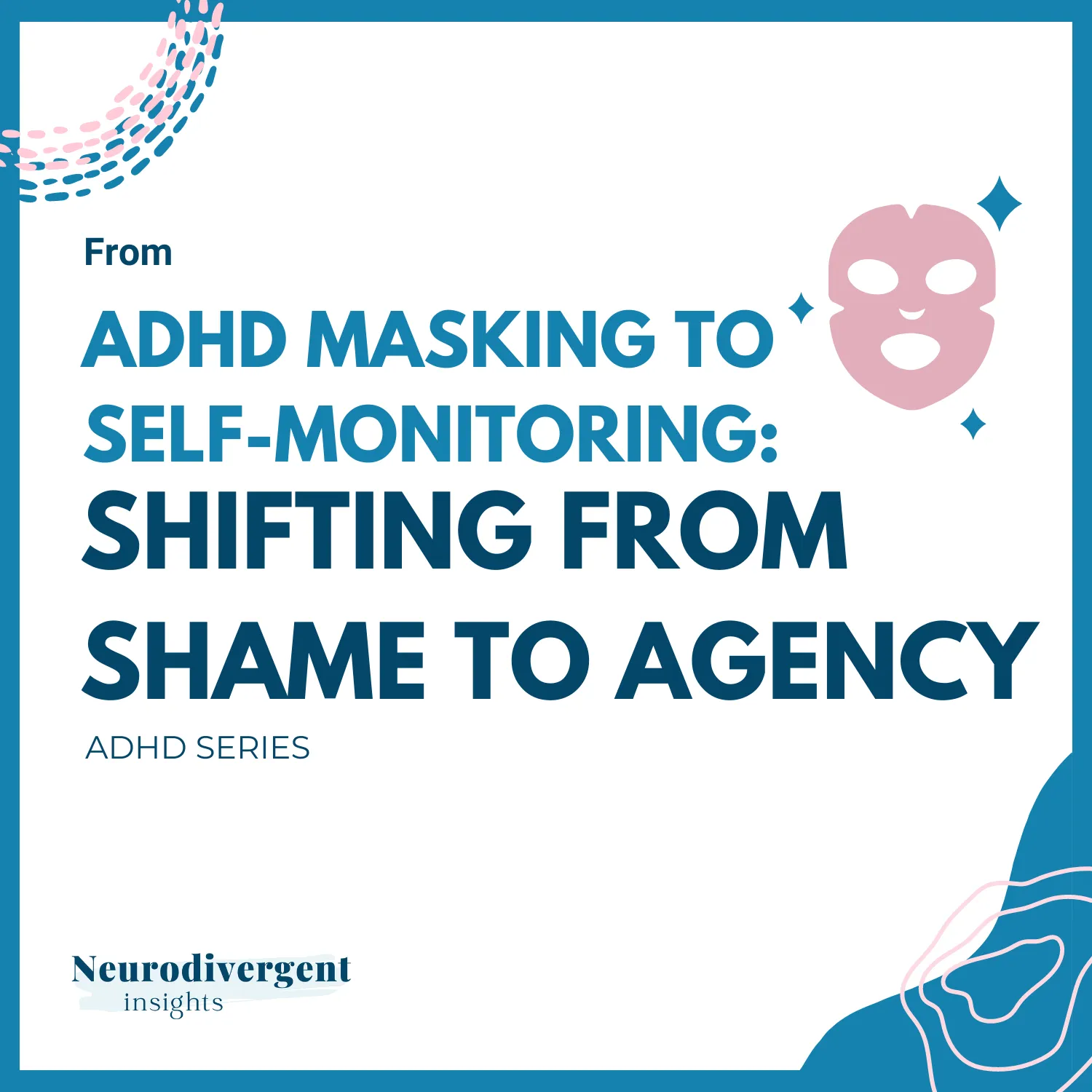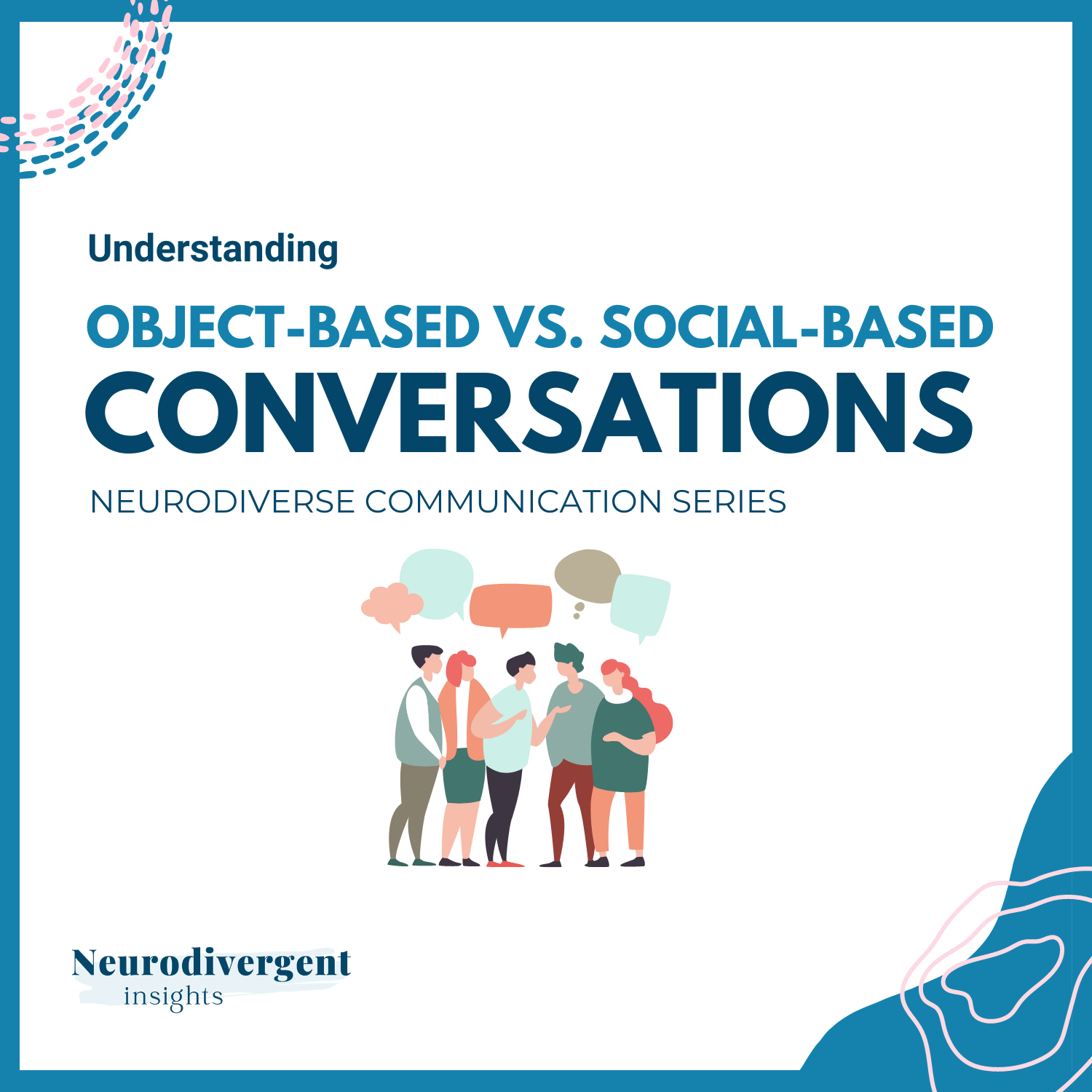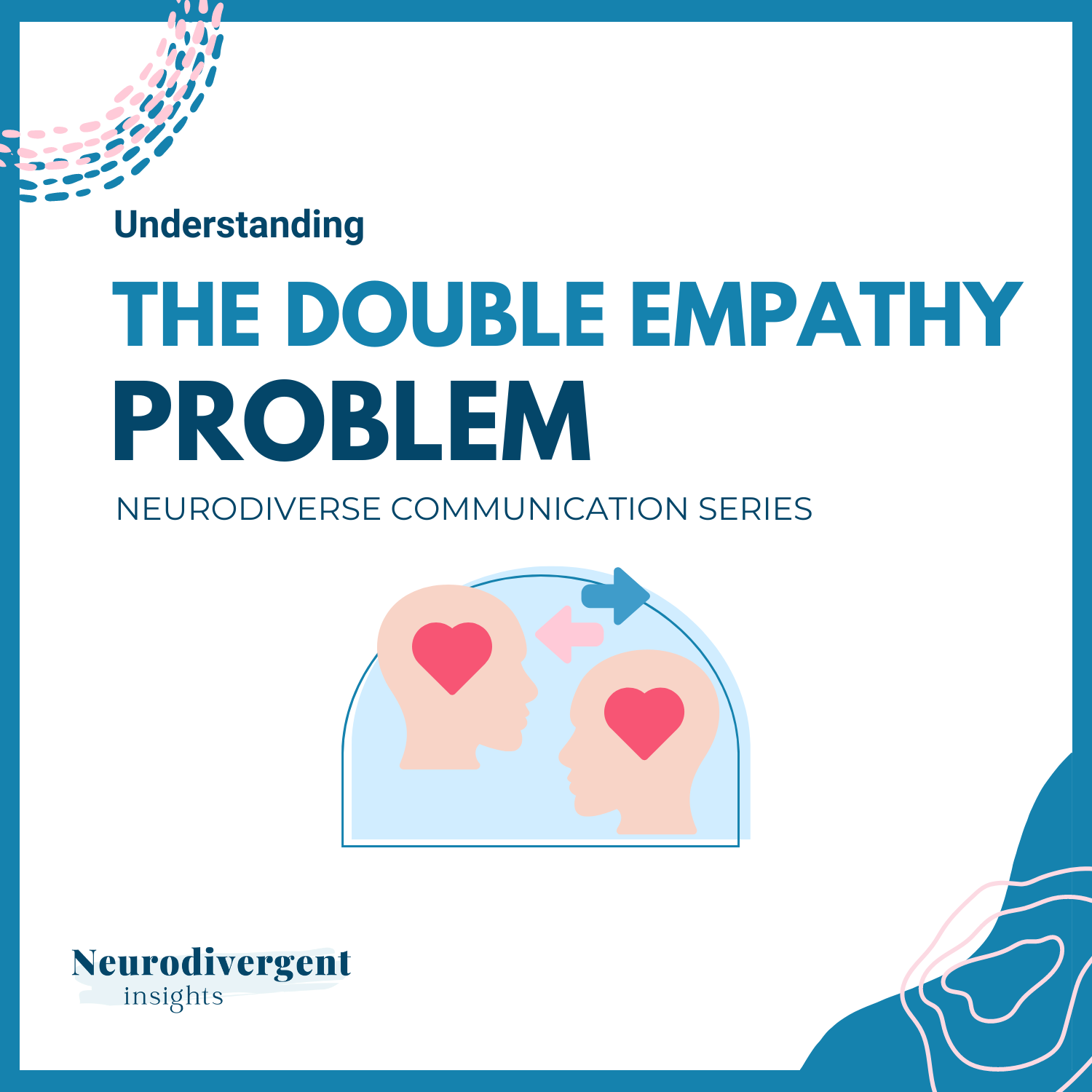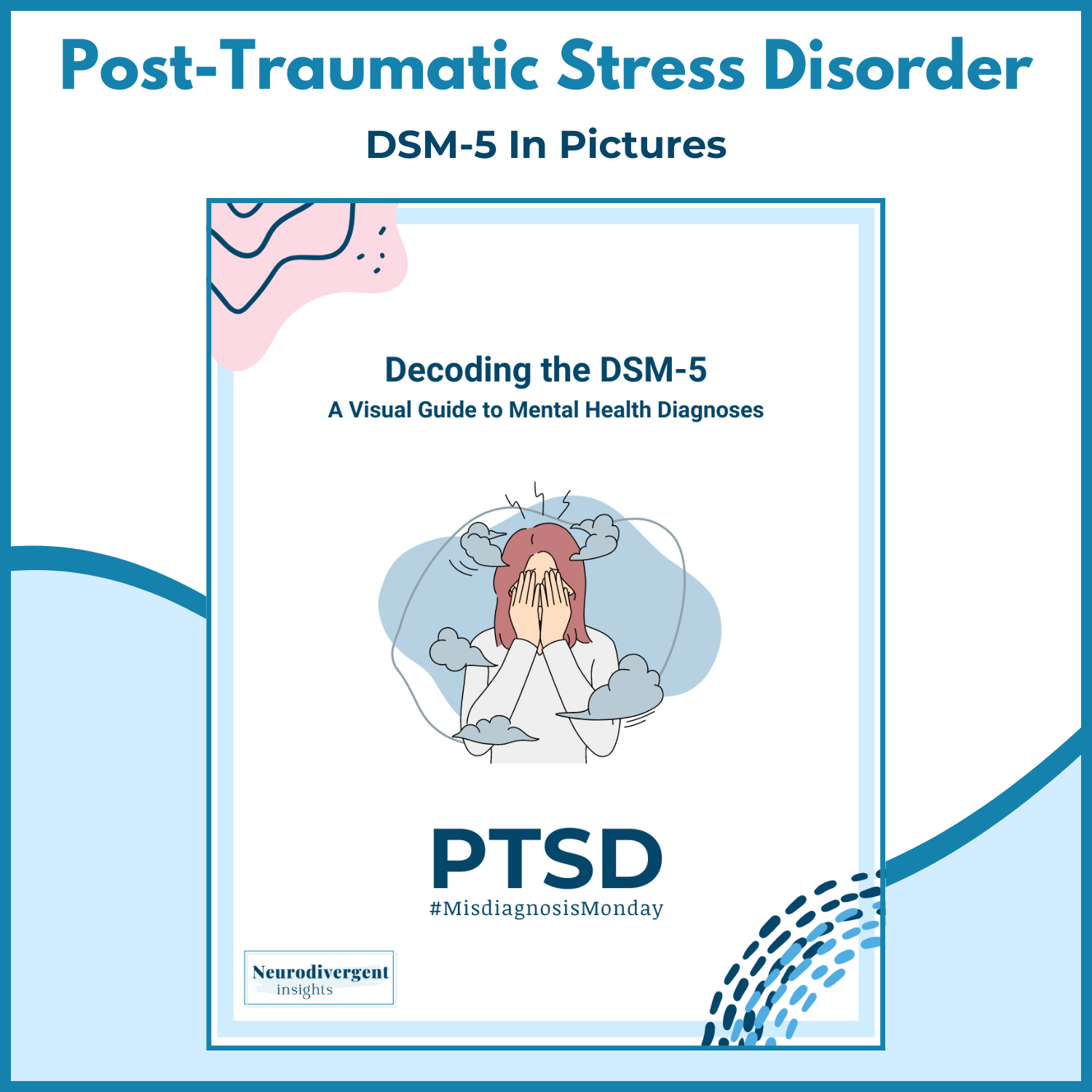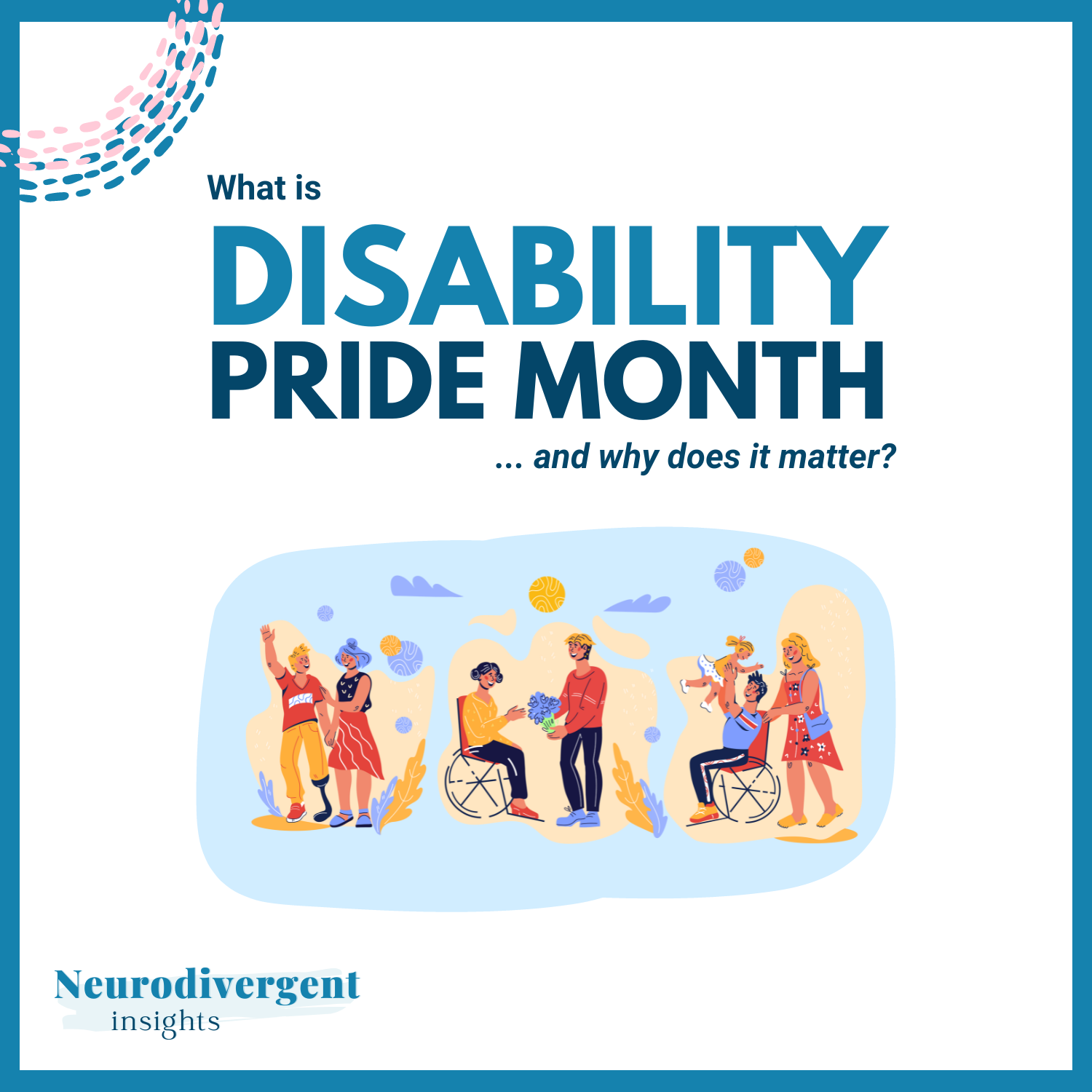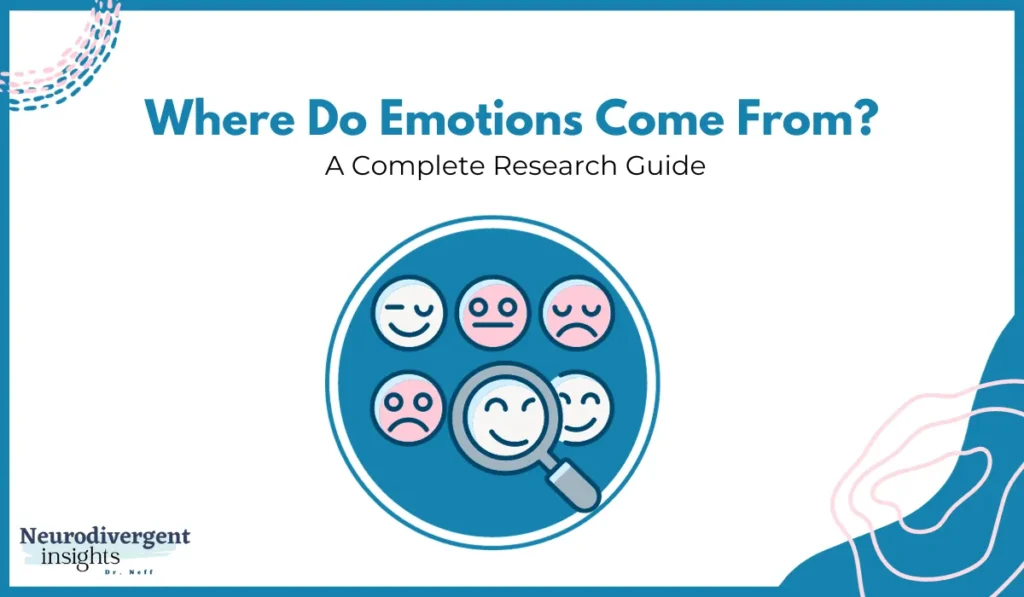
Emotions, intricate blends of mental and physical states, form a broad spectrum. They encompass everything from the elation of joy to the weight of sadness, the fervor of anger, the surge of fear, the jolt of surprise, and the aversion of disgust. These aren’t just transient feelings; they’re potent influencers of our choices, actions, and social interactions, playing a vital role in our health and well-being. The study of emotions, intersecting disciplines like psychology and neuroscience, aims to unravel their complex workings and their effects on human behavior.
As an Autistic person, understanding the inner workings of emotions has been key for learning how to work with them. The field of emotional psychology, bustling with significant research, offers some helpful insights and theories. There are many different theories to suggest what our emotions are and where they come from. In this blog post, we will review different theories of emotions.
What Are Emotions?
Emotions derive from a combination of our bodily sensations plus the story our mind tells us about those sensations. Our bodily sensations act as signals, providing information about our internal and external environment. However, our mind’s perception of and beliefs about these sensations give rise to specific emotions.
For example, when we experience a rapid heartbeat and sweaty palms, our bodily sensations indicate physiological arousal. However, our mind evaluates and interprets this arousal as fear, excitement, or anxiety based on the context of the arousal and our past experiences. The story our mind tells us about these bodily sensations influences the specific emotion we feel.
Our thoughts, memories, and beliefs play keys role in shaping our emotional experiences. If we encounter a situation that reminds us of a past negative experience, our mind may generate a narrative of fear or sadness, leading to corresponding emotions. On the other hand, if we interpret a situation positively, our mind may produce a narrative of happiness or joy and those corresponding emotions.
Where Do Emotions Come From?
It turns out that your emotions are pretty complicated and are a mix of different things that start with a combo of genetics, biology, and the environment around you. Here are a few of the major sources of emotions:
1. Brain Activity: Emotions are predominantly a result of brain activity. Different parts of the brain, such as the amygdala, hippocampus, and prefrontal cortex, play a significant role in generating and regulating emotions.
2. Neurotransmitters: Chemical messengers in the brain, called neurotransmitters, are responsible for transmitting signals between nerve cells. Neurotransmitters like serotonin, dopamine, and norepinephrine have been linked to specific emotions.
3. Genetics: Certain genetic predispositions can make us more susceptible to experiencing specific emotions. Genetic factors influence the brain’s chemical composition and responses to different situations.
4. Past Experiences: Personal experiences, memories, and learned behaviors significantly impact emotions. Past events and interactions shape our expectations and predictions and in turn influence our emotional reactions.
5. Culture and Environment: Cultural and social norms, values, and upbringing influence the range and expression of emotions. Environmental factors, such as familial, social, and economic circumstances can also influence our emotions.
6. Hormonal Changes: Hormones also have a profound impact on emotions. Hormones like cortisol, released during stress, can influence emotional responses and vice versa. Hormonal changes during puberty, pregnancy, and menopause also affect emotional experiences.
Do Emotions Start In the Body?
The origin of emotions is a riddle, with clues scattered across the domains of psychology and neuroscience. This question intrigues scientists and everyday thinkers alike: Are our emotions ignited in the body, or do they spark in the mind?
Imagine this scenario: You’re watching a suspenseful movie. Your heart races, your palms sweat – these physical reactions occur in tandem with feelings of anticipation and excitement. This example highlights a theory suggesting that our emotions may indeed have their roots in such bodily responses. It’s as if our body sets the stage for the emotion to follow.
Neuroscientist Antonio Damasio’s somatic marker hypothesis adds a fascinating twist to this idea. According to this theory, when our body reacts to certain situations or events, these reactions are then linked, often unconsciously, to theemotional experiences in our personal history and influence the decisions we make. It’s like your body senses the emotion before your conscious mind catches up.
However, there’s another way to look at this. The cognitive appraisal theory suggests that it’s not just our bodily reactions at play, but also how we interpret these reactions and events. Our thoughts and interpretations are the conductors of our emotional orchestra, influencing how we feel about a situation or event.
So, are emotions a product of our bodily reactions, our thoughts, or a mix of both? The answer is still not clear-cut. It seems that our emotional life is a complex tapestry woven from threads of physiological, cognitive, and social influences.
James-Lange Theory of Emotion
Once upon a time in the realm of psychology, William James and Carl Lange embarked on an intellectual journey, leading to the birth of the James-Lange theory. This theory paints emotions as the aftermath of bodily changes – heart racing, palms sweating – in response to life’s myriad stimuli. It suggests the following sequence: first, the body reacts, and then, the mind perceives these reactions as emotions.
Critique of the James-Lange Theory
However, this theory isn’t without its critics. Consider a gym session – your heart pounding, sweat cascading – yet, fear is conspicuously absent. Or those moments where emotions seem to leap ahead of bodily reactions, like the instant chill of fear upon stepping into danger, with no time for physical symptoms to register. Such examples hint that this theory might only skim the surface of the deep ocean of emotional complexity.
Do Emotions Start In the Mind?
The mind plays a significant role in generating and interpreting emotions. Our thoughts, beliefs, memories, and perceptions all contribute to how we experience and express emotions. For example, interpreting a situation as threatening or rewarding can trigger different emotional responses.
The question of whether emotions start in the mind or the body depends on which psychological theory we refer to. Different theories emphasize the role of either physiological responses (the body) or cognitive processes (the mind) in the generation of emotions. Whether or not emotions begin in the mind, it is evident that both the body and the mind play essential roles in our emotional experiences.
Lazarus Theory of Emotion
In stark contrast to the James-Lange theory, psychologist Richard Lazarus proposed a mind-centric view. According to the Lazarus theory, it’s not what happens to us, but how we interpret these happenings that sculpt our emotional landscape. Here, the mind assesses a situation first, setting the stage for both emotional and bodily responses. The Lazarus theory suggests that our emotions result from how we interpret a situation and the meaning we give to it. According to this theory, the mind assesses the stimulus before experiencing an emotional and bodily response.
Schachter-Singer Theory
Enter the Schachter-Singer Theory. They bring together a harmonious dance of both body and mind. Also known as the Two-Factor Theory, it proposes that emotions are not just reflexive responses but involve understanding and labeling our physical reactions within our situational context. First, the body responds, then the mind steps in and appraises the situation, which in turn shapes our emotional response.
According to this theory, when exposed to a stimulus, it is our body that responds first. From that physiological response, we perform a cognitive appraisal, assessing what the appropriate reaction should be and can then form our emotional response.
Which One Is Right?
So, which theory strikes the truest chord? Each theory offers unique insights to our broadening understanding of emotions and collectively open windows to different facets of emotional experience.
Additionally, there are other intriguing theories of emotions that suggest one theory may not be more correct than the other, including the Evolutionary Theory of Emotions, the Facial-Feedback Theory of Emotions, and the Neurological Theory of Emotions. It’s clear that emotion is a complex interplay of both cognitive and physiological elements. The essence of emotion, it seems, lies in this intricate dance between what our bodies feel and how our minds interpret these sensations.
There are two major studies in the world of emotion research that highlight the interplay between body and mind, the Adrenaline Study and the Capilano Suspension Bridge Study.
The Adrenaline Study
In the Adrenaline Study, 184 participants were injected with a new drug and told it was to test a new drug for eyesight. Only that’s not what they were being injected with. Participants received injections of epinephrine (also known as adrenaline) and split into two groups. One group was told which kinds of side effects they could expect to experience, the other group was not.
Both groups were exposed to a “participant” playing a role in the study. When placed in a room with either of the groups, their job was to act as if they were either happy and euphoric or irritable and angry. The group that was not told about the side effects were more prone to “catch” the emotions of the participant (to interpret the adrenaline side effects as either anger or euphoria).
The study’s results were highly illuminating, demonstrating that when people don’t have an explanation for emotion, they are more susceptible to the emotions of those around them.
The study highlights how our beliefs about our bodily sensations play a key part in determining how to interpret and experience emotion.
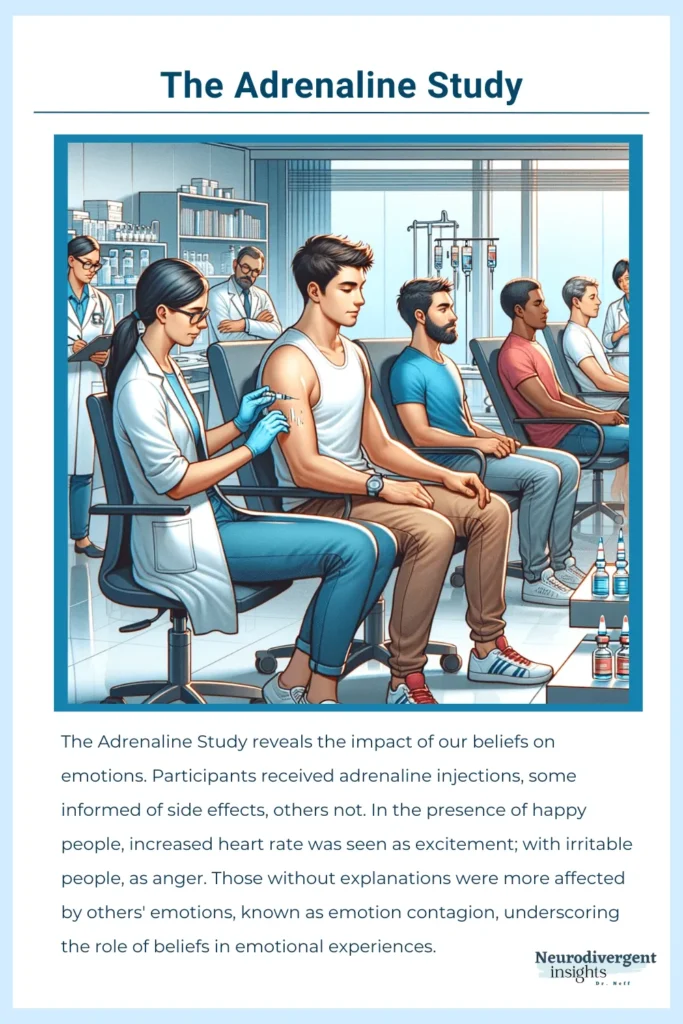
Capilano Suspension Bridge Study
The Capilano Suspension Bridge Study is another prominent psychological experiment, shedding light on how we can sometimes confuse our bodily arousal with various stimuli. It’s a fascinating example of how our emotions and physical sensations can be misattributed.
In this study, men were told to walk across either a stable bridge or a wobbly suspension bridge. A conventionally attractive woman stood in the middle of the bridge. After a short chat, the woman gave each participant her phone number. The findings showed that the men who were approached on the shaky suspension bridge were more likely to call the researcher later compared to those who were approached on the safe bridge.
Results were interpreted as a case of “misattribution of arousal”: the participants on the suspension bridge mistakenly thought their jittery feelings were due to liking the female researcher instead of realizing it was because the bridge was making them nervous. This study illustrates how our emotions and physical reactions can influence how we feel attracted to others and the decisions we make.

The Takeaways
We’ve covered several different theories and psychological studies that suggest the origin of our emotions and the effects that our bodily responses have on them. Some of the key takeaways are:
1) Emotions are complex and puzzling! The more we struggle to grasp what triggers these emotions, the more vulnerable we become to outside influences shaping our feelings.
2) The story we tell ourselves is important! This isn’t just saying emotions are all in our minds. How we interpret the bodily sensations associated with emotions truly matters.
Emotion Resources
For those seeking to delve deeper, here are some further resources for more of a deep dive into the complex world of emotions:
Emotions 101 Workbook and Companion Skillsbook: This Neurodivergent Insights digital workbook set provides an overview of emotions as well as 55+ skills for working with emotions.
How Emotions Are Made: The Secret Life of the Brain: Written by a neuroscientist, this is a comprehensive yet accessible take on emotions. Lisa Feldman Barrett debunks some of the major theories of emotions and explains exactly what they are. It is science-heavy, but if you’re looking for a comprehensive, cutting-edge take on emotions, this is a great resource!
The Science Of Emotions (Huberman Lab): Another great deep science deep dive. For people who do well with video (or audio), this video podcast provides a scientific breakdown of the theory of emotion by a neuroscientist.
Divergent Conversations-Autistic Emotions: Less scientific, but if you’re looking to hear from a lived experience context; Patrick and I, both mental health professionals, talk about emotions and our experience of emotions as AuDHDers (Autistic-ADHD).
Summary: Where Do Emotions Come From?
While there may not be a definitive answer on where our emotions originate, what we do know is that emotions come from a combination of our bodily sensations and the meaning our mind assigns to them. Our mind constructs a narrative based on our thoughts and interpretations, shaping our emotional experiences.
Understanding the connection between bodily sensations and the stories created by our mind can help us gain insight into our emotions and how we can regulate and integrate them effectively. By paying attention to our bodily sensations, we can become more aware of when certain emotions are arising in us.


